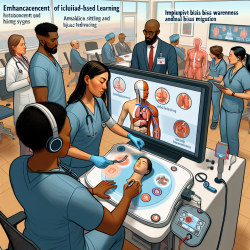Understanding the Dynamics of FGM/C in Senegal: Insights for Practitioners
In the realm of speech language pathology and child welfare, understanding cultural and societal practices is crucial for creating effective interventions. The research article "Trends in Female Genital Mutilation/Cutting in Senegal: What Can We Learn from Successive Household Surveys in Sub-Saharan African Countries?" provides valuable insights into the prevalence and factors influencing female genital mutilation/cutting (FGM/C) in Senegal. This blog aims to distill these findings and explore how practitioners can leverage this data to improve outcomes for children.
Key Findings from the Research
The study analyzed data from two successive Senegal Demographic and Health Surveys (DHS) conducted in 2005 and 2010-11. Despite a slight decrease in national FGM/C prevalence from 30.1% to 28.1%, significant regional and individual-level variations were observed. The study employed a Bayesian geo-additive mixed model to account for spatial and individual factors, revealing that community-level influences play a crucial role in the perpetuation of FGM/C.
Regional and Individual Factors
Key findings include:
- High prevalence "hot spots" were identified in regions such as Kolda, Tambacounda, and Matam.
- Factors such as ethnicity, religion, and socio-economic status significantly influenced the likelihood of FGM/C.
- Age was a surprising factor, with younger women (aged 15-20) showing a higher likelihood of undergoing FGM/C, contrary to expectations.
Implications for Practitioners
For practitioners, these findings underscore the importance of understanding the socio-cultural context when designing interventions. Here are some actionable insights:
- Community Engagement: Programs should focus on community-level interventions that address social norms and conventions. Engaging community leaders and leveraging public declarations can be effective strategies.
- Targeted Education: Educational programs should be tailored to address the specific needs of high-risk groups, such as certain ethnic communities, and emphasize the health risks associated with FGM/C.
- Age-Specific Interventions: Given the higher prevalence among younger women, interventions should also target this demographic, possibly through school-based programs.
Encouraging Further Research
While the study provides a comprehensive overview of FGM/C trends in Senegal, it also highlights areas for further research. Understanding the causal mechanisms behind regional variations and the role of education and socio-economic factors can provide deeper insights. Practitioners are encouraged to explore these areas to enhance their understanding and improve intervention strategies.
To read the original research paper, please follow this link: Trends in female genital mutilation/cutting in Senegal: what can we learn from successive household surveys in sub-Saharan African countries?










